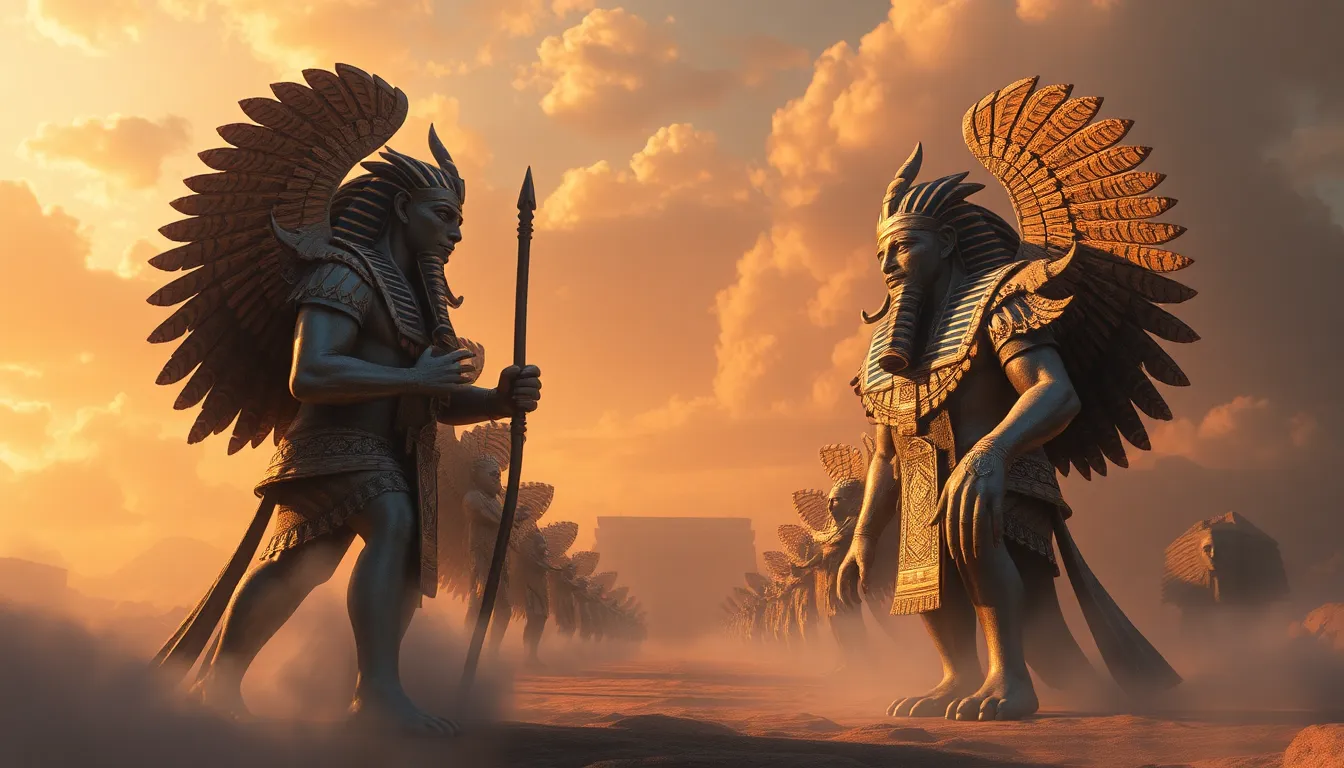The Divine Reckoning: Egyptian Myths of Retribution Unveiled
I. Introduction to Egyptian Myths of Retribution
Egyptian mythology is rich with tales that explore the concepts of justice, morality, and retribution. In ancient Egyptian belief, retribution refers to the divine recompense for one’s actions, whether good or evil. This notion was deeply intertwined with the culture’s understanding of morality and the cosmos.
Understanding divine justice in Egyptian culture is crucial, as it shaped societal norms and influenced the behavior of individuals. Retribution was not merely punitive; it was viewed as a means to restore balance and order in both the human realm and the universe.
II. The Pantheon of Egyptian Deities
The ancient Egyptians worshipped a vast array of deities, many of whom were associated with the themes of justice and retribution. The following are key gods and goddesses who played significant roles in enforcing moral order:
- Ma’at: The goddess of truth, justice, and cosmic order, Ma’at was central to the concept of balance in the universe.
- Osiris: The god of the afterlife and resurrection, Osiris symbolizes the moral consequences of one’s earthly actions.
- Set: Often depicted as a chaotic force, Set represents the opposition to Ma’at and the disruption of order.
- Thoth: The god of wisdom and writing, Thoth recorded the deeds of humans and was integral to the judgment process.
These deities embodied various attributes related to justice, including the enforcement of moral codes and the execution of divine punishment.
III. The Concept of Ma’at: Order and Justice
Ma’at is a fundamental principle in ancient Egyptian religion, representing truth, balance, and cosmic order. It was believed that the universe was governed by Ma’at, which ensured that everything remained in harmony.
Ma’at governed both divine and human actions, dictating how individuals should live their lives. Actions that aligned with Ma’at were rewarded, while those that strayed from this principle faced retribution. The Egyptians believed that maintaining Ma’at was essential for the well-being of the state and the cosmos.
IV. Mythical Narratives of Retribution
Egyptian mythology is filled with narratives that emphasize divine punishment and reward. One of the most notable myths is the tale of Osiris and Set. This story illustrates themes of betrayal, vengeance, and the restoration of order:
- Osiris’s Murder: Set, filled with jealousy, killed his brother Osiris and dismembered his body, casting it across Egypt.
- Isis’s Quest: Osiris’s wife, Isis, sought to recover his body, ultimately resurrecting him through her devotion and magic.
- Set’s Punishment: As a result of his actions, Set was condemned to eternal conflict, representing the chaos that opposes order.
This myth serves as a reminder of the consequences of immoral actions and the eventual triumph of justice through the restoration of Osiris, who became the ruler of the afterlife.
V. The Role of the Afterlife in Retribution
The afterlife held significant importance in Egyptian beliefs about retribution. Central to this concept is the Judgment of the Dead, a ceremony wherein the soul of the deceased is weighed against the feather of Ma’at.
During this ceremony, the heart of the deceased is placed on one side of a scale, while Ma’at’s feather is placed on the other. The outcomes of this judgment determined the fate of the soul:
- Balanced Scale: If the heart was lighter than the feather, the soul was deemed worthy and allowed to enter the afterlife.
- Heavy Heart: If the heart was heavy with sin, it was devoured by Ammit, a fearsome creature, resulting in the soul’s eternal damnation.
This judgment process illustrates the Egyptian belief in accountability, emphasizing that one’s earthly actions directly influence their fate in the afterlife.
VI. Symbols and Rituals of Divine Retribution
Egyptian art and symbolism often reflected themes of justice and retribution. Various artifacts and imagery were created to represent these concepts, including:
- The Ankh: Symbolizing life, the ankh was often depicted in the hands of gods as a representation of divine authority.
- The Scales of Ma’at: Representing the weighing of the heart, these scales became a powerful symbol of justice and moral balance.
- Hieroglyphs: Inscriptions that depicted stories of divine retribution, emphasizing the consequences of one’s actions.
Ritual practices aimed at appeasing deities of retribution included offerings, prayers, and ceremonies to seek protection from divine wrath and ensure a favorable judgment in the afterlife.
VII. The Influence of Egyptian Myths on Modern Concepts of Justice
The themes present in Egyptian myths of retribution have profound parallels with contemporary concepts of justice. Many modern legal systems reflect the ancient belief in a moral order that must be upheld, where actions have consequences.
For example:
- Accountability: The principle that individuals are responsible for their actions resonates with the Egyptian belief in the weighing of the heart.
- Restorative Justice: The idea of restoring balance and harmony mirrors the Egyptian pursuit of Ma’at.
- Cultural Legacy: Egyptian myths continue to inspire literature, art, and philosophy, reinforcing the relevance of justice in human society.
VIII. Conclusion: The Enduring Power of Divine Justice
The myths of retribution in ancient Egyptian culture offer profound insights into the nature of morality and justice. They remind us that our actions have consequences and that divine justice is an integral aspect of the universe.
Reflecting on these ancient beliefs today encourages a deeper understanding of the interplay between morality, justice, and mythology. As we navigate the complexities of modern life, the lessons from Egyptian retribution myths continue to resonate, urging us to strive for balance and justice in our own lives.




